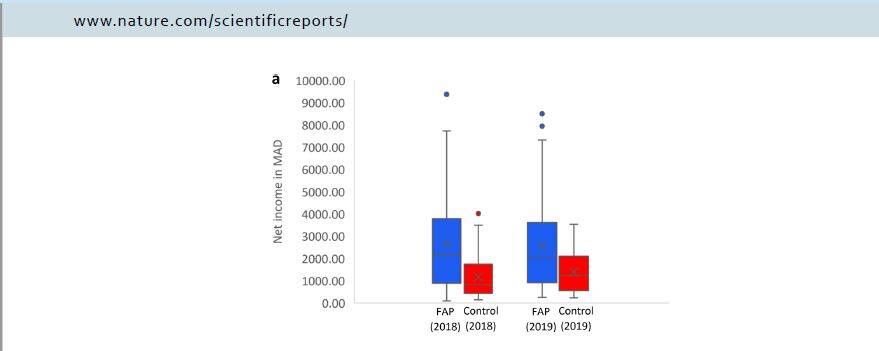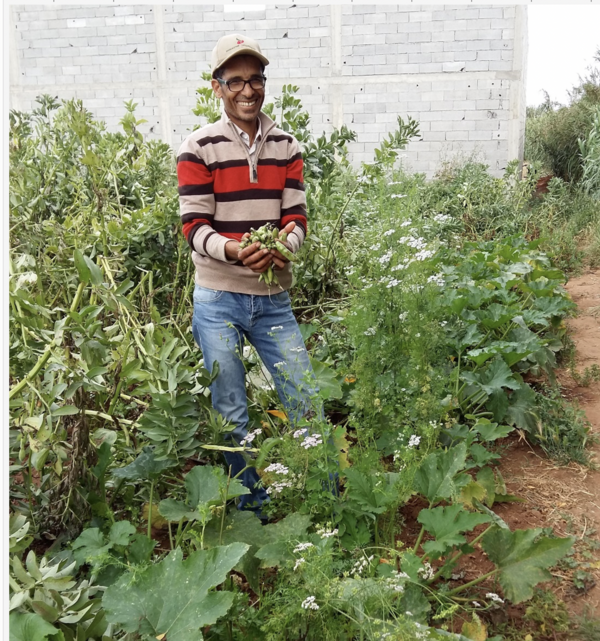Pollinator protection for everyone

ICARDA’s Farming with Alternative Pollinators (FAP) project is made possible through the generous support of the IKI project
-----
Farming with Alternative Pollinators (FAP) is a sustainable alternative to costly protection approaches subsidized by EU and USA
Current pollinator-protection strategies are unaffordable for low- and middle-income countries. Farmers carrying them out in high-income countries, usually request financial compensation to set aside and seed strips of flowering weeds in their fields so that pollinators can feed and multiply. ICARDA’s Dr. Stefanie Christmann has developed pollinator protection using seeded marketable habitat enhancement plants. This approach pays for itself.
The European Union spends billions on reward schemes using strips of weeds, along with campaigns and events to raise awareness. Yet pollinator decline in Europe continues. Such costly strategies are not affordable for low- and middle-income countries, which are in need of economically viable pollinator protection strategies. Dr. Christmann’s, Farming-with-Alternative-Pollinators (FAP) approach offers these farmers a viable option.
FAP creates a win-win situation for farmers and pollinators. Using marketable habitat enhancement plants (oil seeds, vegetables, spices, etc.) in the strips instead of weeds, is a way to attract high diversity and abundance of pollinators and natural enemies, increasing farmers’ incomes through better pollination and better pest control. The additional net income is measured as an economically self-sustaining incentive for farmers.
In Dr Christmann’s, study1, a large-scale project with more than 230 farmer fields and seven main crops - zucchini, pumpkin, melon, eggplant, tomato, faba bean, and okra - in four highly differing agro-ecosystems demonstrated 121% additional net income gain and 65% lower pest abundance in the main crop, in comparison to monocultural control fields.

Within FAP, farmers learn which plants are attractive to pollinators and natural pest enemies, they learn how to differentiate insects, and to recognize insects beneficial to pollination and pest control. They also learn which kind of nesting support – bare soil, hollow stems, or old wood – can facilitate nesting close to the field, allowing pollinators to build strong next generations and spend more time for pollination and less on flying between fields and remote nests.

For a short insight in FAP take a look at this 8 minutes video, and if you get seriously interested and consider FAP-introduction in your country, watch this detailed 50 minutes video which also includes low-cost- policies and interviews with farmers, out-scaling agents.
FAP was developed to protect pollinators, but as a result, it also supports food security by higher production and biodiversity protection in general, as pollinators are crucial for the genetic diversity of 87% of flowering plants, species diversity, and habitat diversity.
Farmers harvest more and better quality due to FAP. Photo: Stefanie Christmann
--------
Study Authors: Christmann, S, Bencharki, Y, Anougmar, S, Rasmont, P, Smaili, MC, Tsivelikas, A, Aw-Hassan, A. 2021. Farming with Alternative Pollinators benefits pollinators, natural enemies, and yields, and offers transformative change to agriculture, Nature Scientific Reports.
